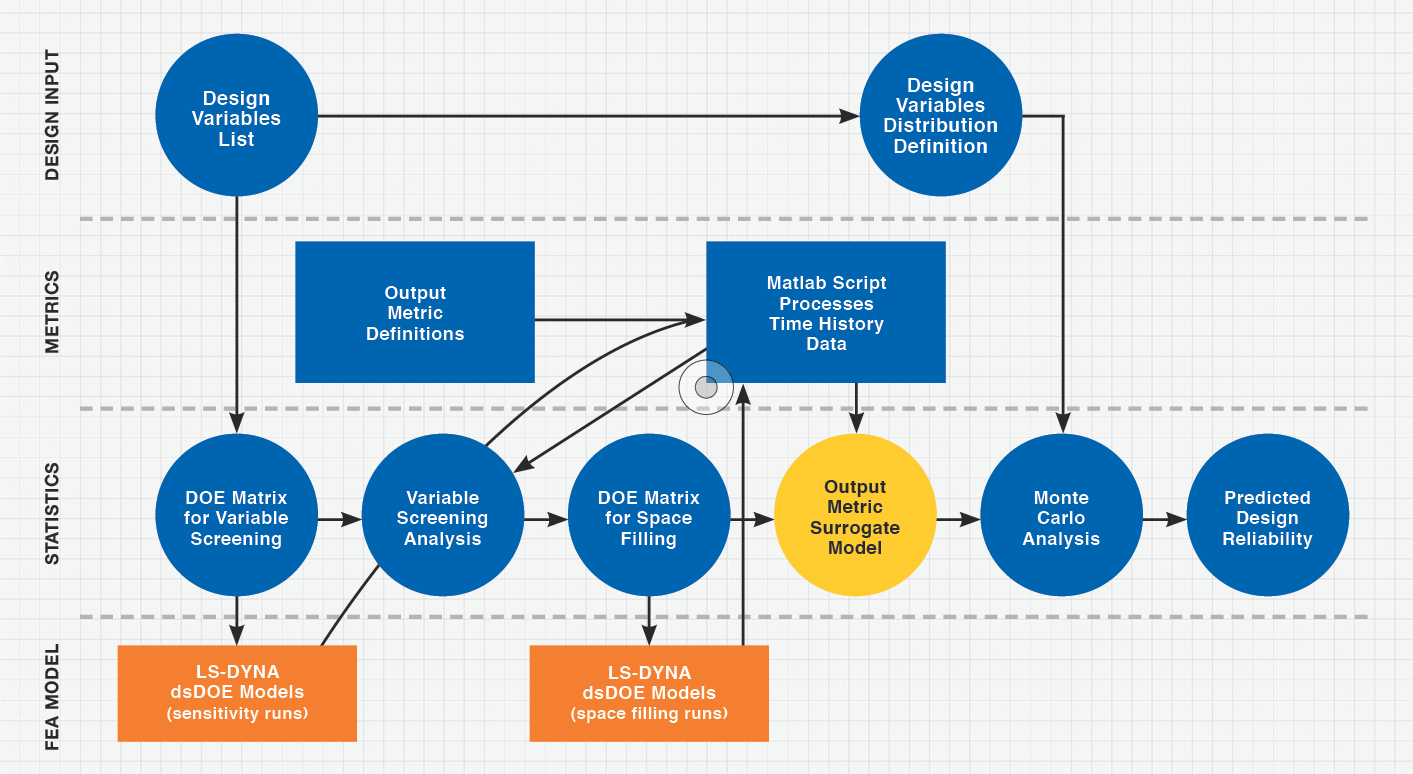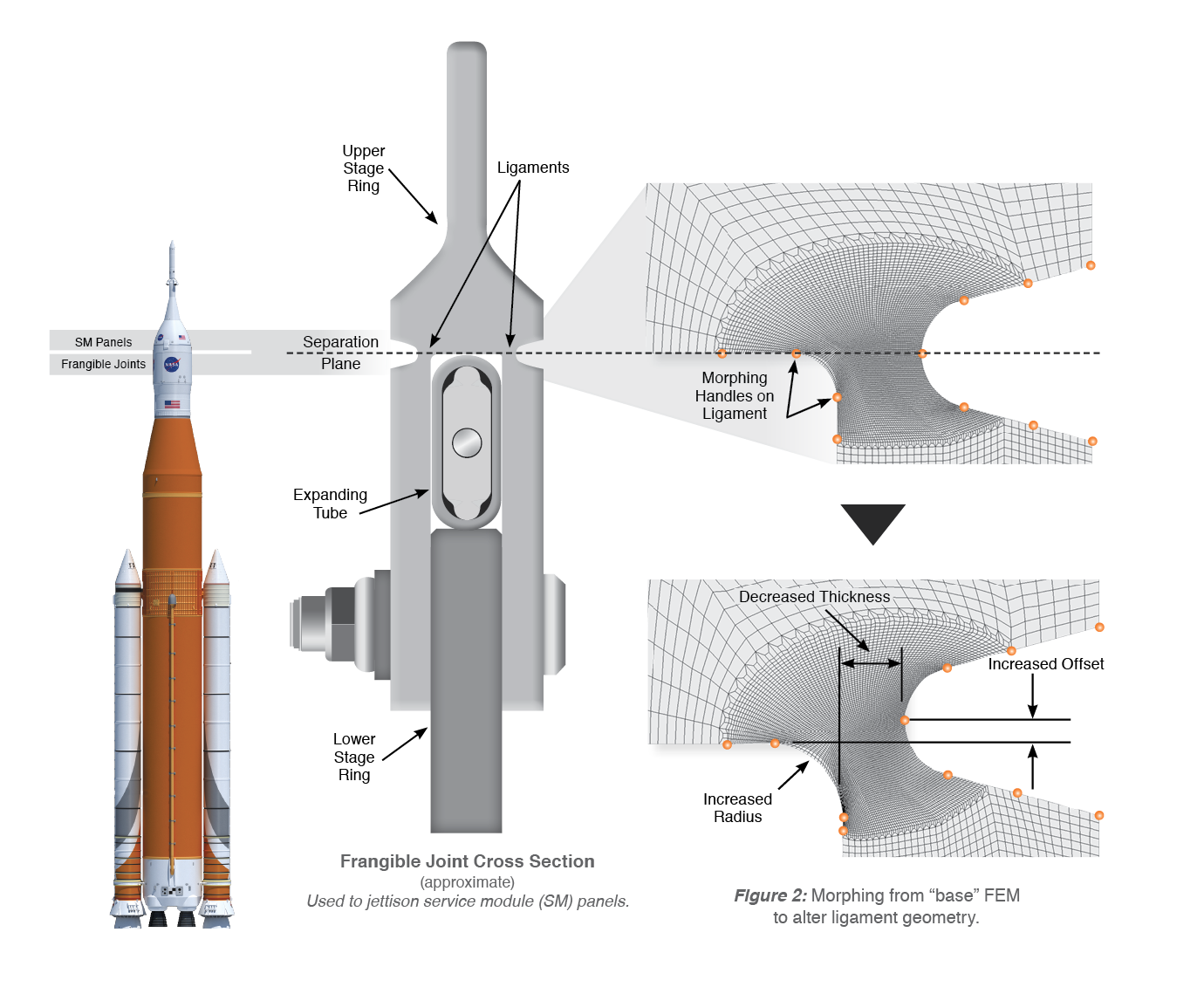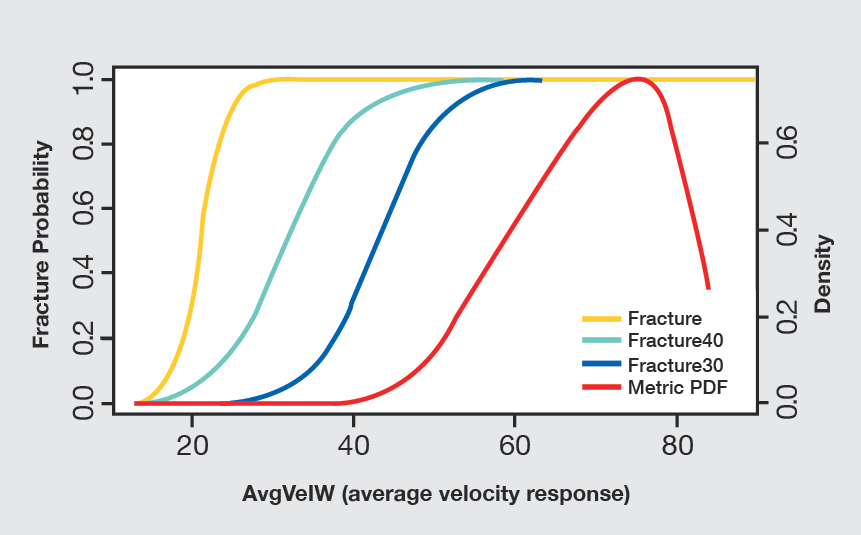Download PDF: Deterministic System Design of Experiments for Frangible Joint Design Reliability
A deterministic system Design of Experiments (dsDOE) method was developed for frangible joints (FJ) to enable rapid estimation of their design reliability. Design reliability means there is an acceptable degree of certainty that the FJ will fracture/actuate when commanded. FJs are typically used in critical applications to separate stages of a launch vehicle or payload shrouds. As part of an NESC-sponsored investigation into FJ reliability, this new method combined a finite element model (FEM) morphing technique with statistical modeling and analysis to develop surrogate models of FJs. These surrogate models were then employed to analyze millions of Monte Carlo-generated configurations and predict design re-liability. An overview of the approach is illustrated in Figure 1.
Morphing of FJ FEM models was employed to rapidly generate hundreds of FEM configurations for subsequent LS-DYNA (a commercially available non-linear FEM code) analysis. The variations in FJ design parameters were generated via DOE methods, and FEM pre-processing capabilities were used to alter a “base” FEM to the desired configurations while minimizing mesh distortion and maintaining element quality. The method also retains all nodes, elements, and boundary conditions in the original “base” model and does not require remeshing, thus increasing analysis throughput. Automating the process enabled hundreds of varied FEM configurations to be generated in about an hour. Figure 2 shows an example of morphing on a FJ ligament.
After generating LS-DYNA response data on the morphed models, statistical models were fit to the resulting metrics to develop polynomial equations that predict the LS-DYNA response over multivariate space, aka surrogate models. These surrogate models were then coupled with statistical distributions of the input variables to run a 10-million case Monte-Carlo analysis and determine the overall distribution of the model’s primary output response metric, designated as AvgVelW (Figure 3), which represents an average velocity response. The fracture/no fracture result of the LS-DYNA analysis was further used to develop logistic fits to this binary response for fractures occurring within 30 µs, 40 µs, and within an unlimited amount of time from commanding. This logistic fit provided a probability of fracture for varying surrogate model output responses. The design reliability was then calculated by dividing total number of expected fractures by 10 million. Figure 3 illustrates the resulting logistic and output distributions used to calculate design reliability.
For more information, contact:
Scott West, JSC, timothy.s.west@nasa.gov





























